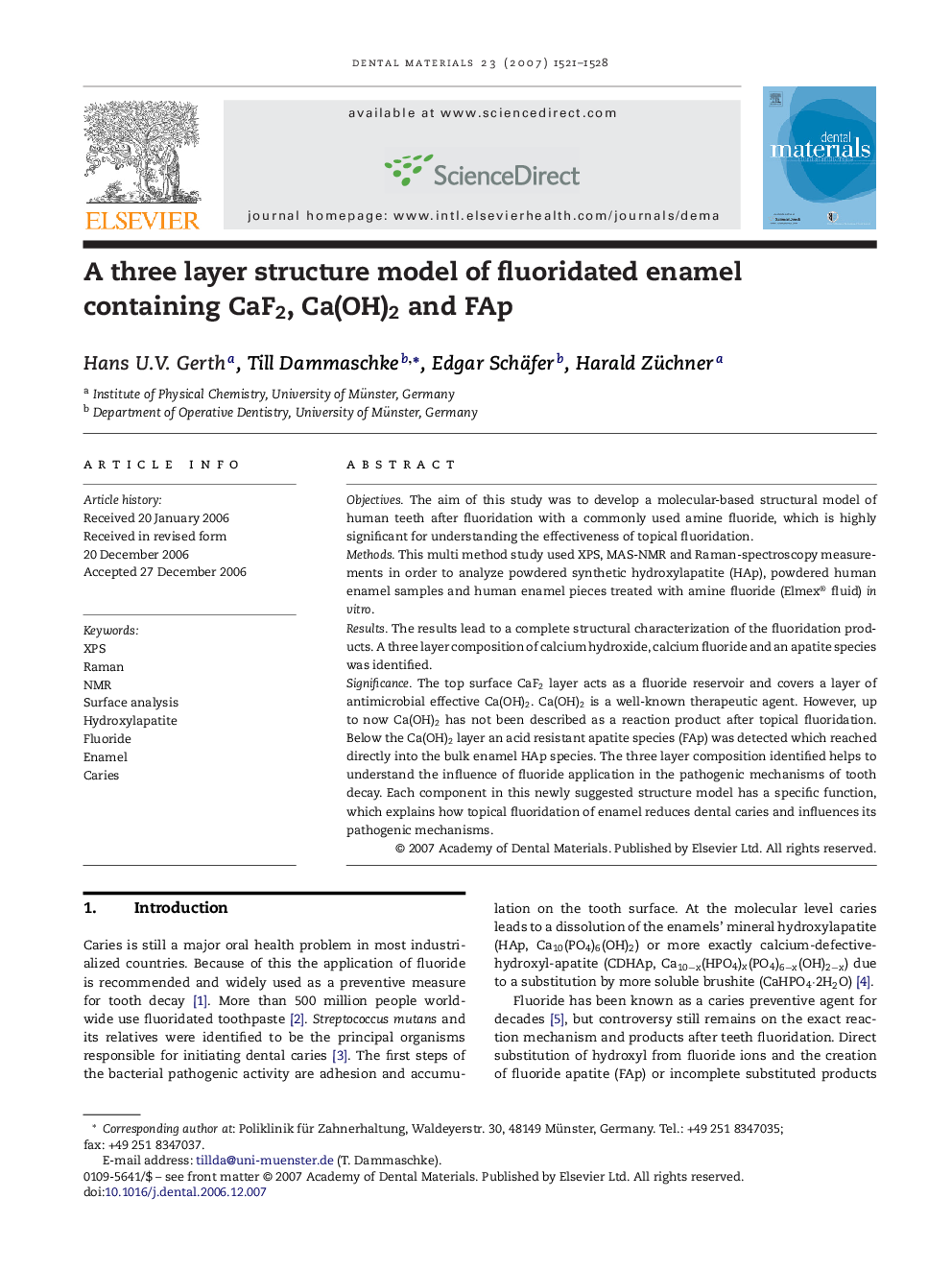| Article ID | Journal | Published Year | Pages | File Type |
|---|---|---|---|---|
| 1423096 | Dental Materials | 2007 | 8 Pages |
Abstract
The top surface CaF2 layer acts as a fluoride reservoir and covers a layer of antimicrobial effective Ca(OH)2. Ca(OH)2 is a well-known therapeutic agent. However, up to now Ca(OH)2 has not been described as a reaction product after topical fluoridation. Below the Ca(OH)2 layer an acid resistant apatite species (FAp) was detected which reached directly into the bulk enamel HAp species. The three layer composition identified helps to understand the influence of fluoride application in the pathogenic mechanisms of tooth decay. Each component in this newly suggested structure model has a specific function, which explains how topical fluoridation of enamel reduces dental caries and influences its pathogenic mechanisms.
Related Topics
Physical Sciences and Engineering
Materials Science
Biomaterials
Authors
Hans U.V. Gerth, Till Dammaschke, Edgar Schäfer, Harald Züchner,
